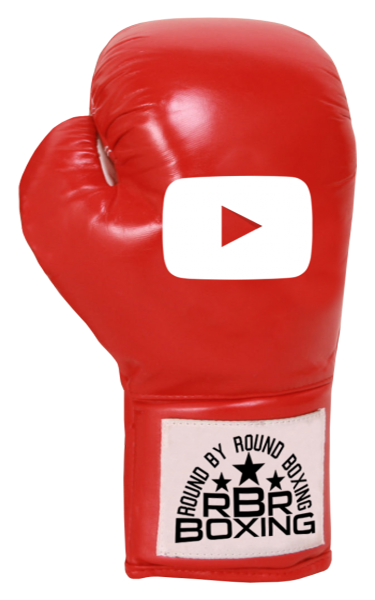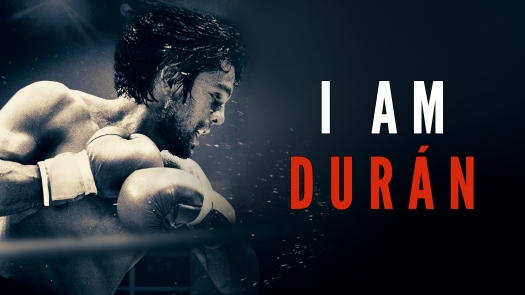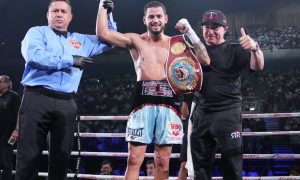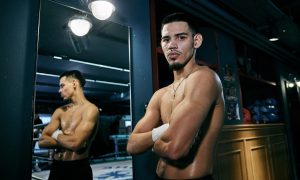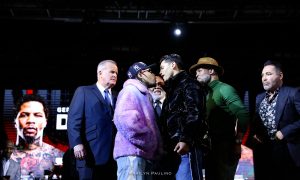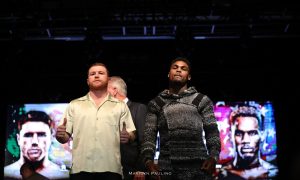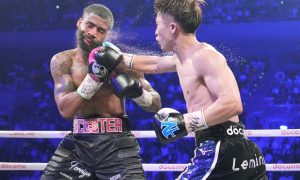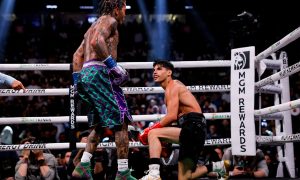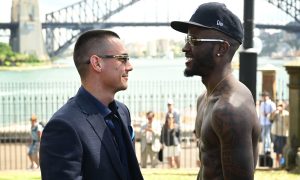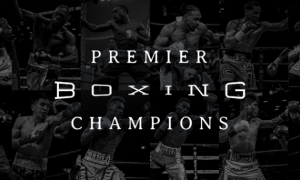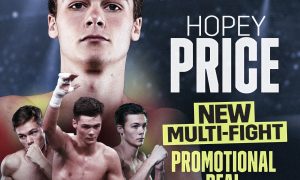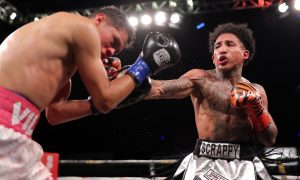“In this story, there is only one legend. That’s me. I was born a fighter, and I will die a fighter.” – Roberto Duran
Throughout boxing history, there have been fighters that have captured the public’s attention, whether it be for a short 15 minutes of fame or popularity that hit a high point, to fall from grace after just a few years.
Very few fighters have captured the public’s imagination and stayed in the boxing world’s consciousness like Roberto Duran (103-16, 70 KOs).
British filmmaker Mat Hodgson set out to make a documentary that highlighted Duran’s illustrious career inside the squared circle, but also to show his cultural impact as a political figure in his native Panama in his latest documentary, I Am Duran.
“Roberto is one of the titans of the sport. He’s been through everything that this sport can throw at you,” said Hodgson in an exclusive interview with Round By Round Boxing. “So you’ve already got a character who’s got a complete picture of a sportsman. You throw him in the mix with the story of his country at the time, he felt like the complete package for us, and it felt like a strong concept for a film. And he was the perfect protagonist.”
The film takes you on a journey through Duran’s career, highlighting most of the ups and downs in the boxing ring and his life. The country of Panama, in many respects, is the main character in the film–along with Duran.
With Duran having grown up in a dangerous part of Panama near the “Canal Zone,” Hodgson went to Panama to get a further glimpse into how Duran is viewed in his native country.
“When we started to put this film together, I went over to Panama to do some research, some proper research,” said the British filmmaker. “And proper research for me involves hitting the streets, talking with people, going to bars, talking to locals, because you get an insight that you don’t get through books and journals and the internet.”
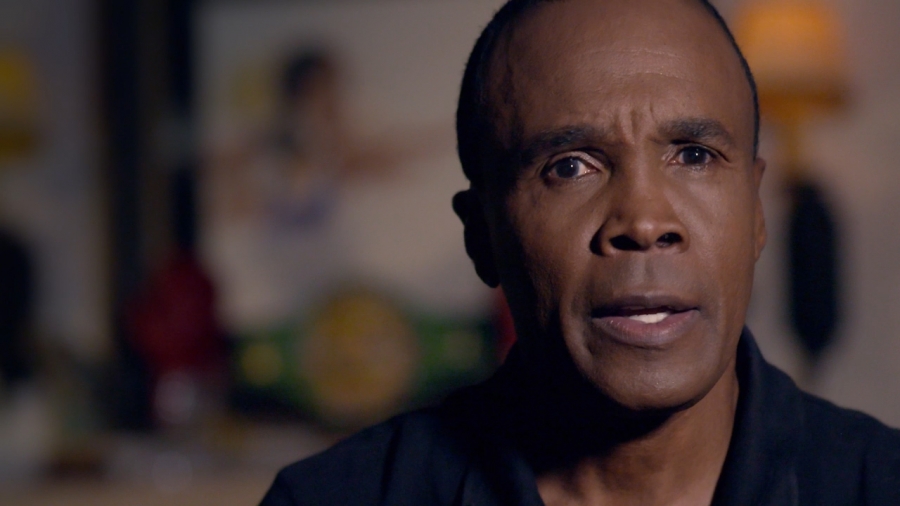
The film features interviews with some of the most significant fighters in boxing history including Ray Leonard, Marvin Hagler, Ricky Hatton, Oscar De La Hoya, Mike Tyson and Lennox Lewis.
Also featured are a great mix of celebrities associated with the sport, such as Sylvester Stallone who shot a scene in 1979’s Rocky 2 with Duran with the two sparring.
Two-time Academy Award-winning actor Robert De Niro, who played Duran’s trainer Ray Arcel in 2016’s Hands of Stone, is also prominently featured throughout the film.
Most impressively are the number of political figures and journalists that are featured in the film including Manuel Noriega and political journalist John Dinges.
For Hodgson, it was imperative to get input from figures in the boxing world and beyond, that had a connection to Duran.
“We were telling, I think, quite a complex story,” said Hodgson. “We had to look at different strands that we could cover off and look at experts in those particular fields or important people in those fields or in the boxing case, people who had a relationship with Roberto or a parallel to his career.”
Duran is a fighter that had a career that spanned four decades, including an unprecedented 119 fights with championships in four weight classes.
The fights chosen to be featured ranged from various points of Duran’s career showing the highest of highs, to the lowest of lows.
The bouts that Duran is best known for are his series of fights with Ray Leonard, specifically the two that took place in 1980. In many respects, these fights are the yin and yang that show the Panamanian at his best and his worst.
“I think that those two fights in many ways crystallize Roberto’s career, the performance he put in the first one was just outstanding,” said Hodgson. “And then the second fight shows another side of Roberto that you can’t ignore. It’s his machismo. He can’t abide what happens to him in that fight. And you’ve got both of these sides of his character, and that’s why it was the perfect storm. For me, they represent the sort of picture, the complete picture of Roberto as a fighter.”
An essential aspect of Duran’s career that is highlighted in the film is the aftermath of his defeat to Leonard in their November 1980 rematch. The loss was more than just a failure, it changed Duran’s perception in Panama and the entire boxing world.
While Duran had already established himself as arguably the greatest Lightweight champion of all time and punched his ticket into the boxing Hall-of-Fame, the “No Mas” incident against Leonard, for many, casts a large shadow over his career.
The impact of the defeat to Leonard crossed over to many of Duran’s bouts in the immediate aftermath. The country of Panama lost faith in him, and he seemed to have lost confidence in himself.
“Panama is not a big country, so you get an icon who is performing on a world stage, it’s going to have more of an impact from a smaller country than a bigger country,” stated Hodgson. “So it almost, shone a brighter light on him within Panama as he started to succeed. And he’s just done this unforgivable act in a ring, their hero that they feel hurt by it and they reject him. The public, they weren’t always with him as well, and that’s the truth. It mirrors the county’s kind of tensions and difficulties and that sort of went side by side with Roberto’s career.”
Some of the most powerful scenes in the documentary take place when Duran and Leonard are both shown the ending of their second match. The reaction by both pugilists is something that all boxing fans should see.
The rise from the ashes story trope is magnified in the documentary showing that Duran didn’t immediately recover from the Leonard fights.
The loss to Kirkland Laing in 1982 that won The Ring Magazine’s “Upset of the Year” is highlighted as one of the lowest points of Duran’s career.
From there you have the juxtaposition of Duran getting his proverbial groove back, most importantly against Davey Moore in 1983 at Madison Square Garden.
“I know that Roberto regrets No Mas,” said Hodgson. “ But the fact that it happened, made him the guy he is now. And the comeback against Davey Moore, it was tough. He had to drag himself out of a really dark place and learn a new place. He lost to Kirkland Laing. He lost everything. It wasn’t just No Mas, he was misfiring, massively misfiring and questioning and doubting himself. So the mental toughness to get himself out of that is really powerful and strong. Hopefully, it resonates in the film.”
While most of the bouts with the famed “Fab Four” are featured, some of the most emotional moments in the film are in its conclusion with Duran’s 1989 match with Iran Barkley for the WBC Middleweight championship.
The climax of showing Duran winning a fight that most thought he would lose magnifies the impact that match had on his career in what many consider to be his swan song.
The real victory in which I Am Duran succeeds is making a man that is already a legend more human. The documentary expands the greatness of Duran, making him more relatable to all audiences, even those who are not boxing fans.
“Who in their life hasn’t had a No Mas moment?” said boxing writer Springs Toledo who was prominently featured through the documentary.
For those who are not familiar with the legend of Roberto Duran and those who are die-hard boxing fans, I Am Duran could stand as one of the best documentaries on the sport of boxing since 1996’s When We Were Kings, which won an Academy Award for Best Documentary Feature.
“We’ve done quite a few boxing docs now, and I am not done with boxing,” said Hodgson. “I love it, and it keeps giving. So I’m sure I’ll still be involved in some more boxing docs. I hope to be anyway. It’s a privilege to work on them.”



